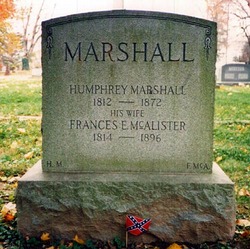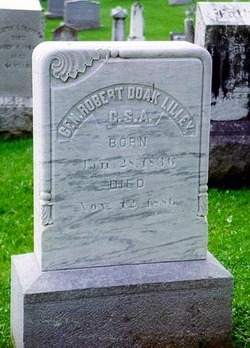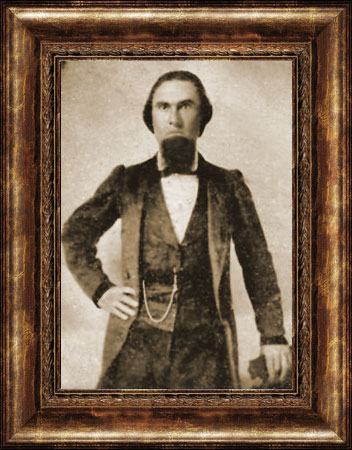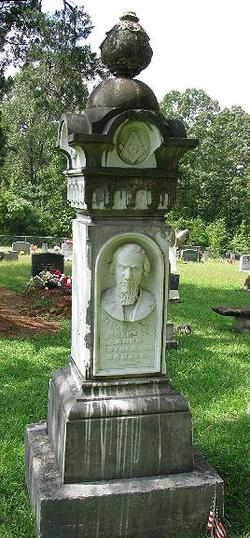Stephen Dodson Ramseur
Stephen Dodson Ramseur was born on May 31, 1837, in Lincolnton, North Carolina. The above image is a very young photograph of Stephen Ramseur. He turned out to be a very aggressive commander under General Robert E. Lee in the Army of Northern Virginia. He had a very good education before obtaining an appointment to West Point. He was an excellent student, graduating just 14 out of 41 cadets. He stood just five feet, eight inches tall and was very slender. Ramseur was very religious, a member of the Presbyterian Church, he was very military in bearing, securing an appointment in the U.S. Artillery.
He never reported to his assignment, having resigned his commission before his native state left the Union. He was already a member of the Confederate Army before North Carolina seceded. Ramseur believed that much in 'States Rights.' His new command saw limited action before joining the army in Virginia that fought in the Seven Day's Campaign. He suffered a wound to his right arm at the Battle of Malvern Hill during the last engagement of the campaign.
Ramseur would miss action for the next six months, but upon his return would be promoted to brigadier general. He would take command of the North Carolina Infantry brigade of George B. Anderson, who had been mortally wounded at Sharpsburg (Antietam). He would lead his brigade at Chancellorsville in the spring of 1863 where he was once again wounded. General Robert E. Lee praised his young brigadier general for his action there. Ramseur seemed fearless in combat. Robert E. Lee declared Ramseur among the best of the brigadiers in his army.
Brigadier General Stephen Ramseur showing premature balding
During the first day of Gettysburg, Ramseur, along with Junius Daniel and George Doles, led his brigade to victory. His division commander failed him that day and he was forced to use his own judgement against the Federal troops. He would see no more action at Gettysburg and unfortunately, the Confederate Army would suffer a defeat as its best commanders missed the important part of the battle.
He would see action at the Wilderness where he would prove his worth as a commander. His finest day would come at the Battle of Spotsylvania just six day after the Wilderness battle. There, he led a counterattack that saved the day for General Lee. He was also wounded in this engagement. Robert E. Lee thanked him personally and his commander Richard Ewell also praised his gallantry.
Brigadier General Stephen Ramseur as he would have appeared at the time of his death
Ramseur was 27 at the time of his promotion to major general and command of a division. One problem that historians have found with Ramseur is his inability to properly scout the position his division was to assault prior to an attack. I have found very little to support this claim. He made a mistake in his first action as division command at Bethesda Church, but more than made up for it at Cold Harbor. Lee then sent Ramseur along with Jubal Early on the Shenandoah Valley Campaign of 1864.
Ramseur was successful at the Battle of Monacacy and then because of poor reconnaissance on his part (see above) at Stephenson's Depot, he made this greatest mistake of his career. Ramseur blamed his subordinates and men, this was a tragic mistake. He led his men forward at the Third Battle of Winchester and made up for his mistake. This would reverse itself several days latter at the Battle of Fisher's Hill. There, Ramseur commanded the entire division because of the loss of Robert Rodes. He would react slowly and see his division crushed.
At Cedar Creek in October of 1864, Ramseur hoped a victory would grant him a furlough to see his new born child. He urged his men forward and was an impressive commander. He placed a flower in his lapel as he urged his men forward. One soldier said that Ramseur's presence was electrical. Although the day soon turned against the Confederates, Ramseur remained with his division, rallying them at every reverse. A Federal bullet struck him in the side, penetrating both lungs before exiting his body. He was soon captured on the field.
Belle Grove Plantation
Ramseur was carried to Belle Grove Plantation where he died that night. He was checked on from time to time by Federal General Phillip Sheridan who had attended West Point with many Southern officers. Sheridan had hated everything Southern prior to the war and throughout his life. Ramseur would die without ever seeing his wife or newborn child again.
Sight where Ramseur was mortally wounded at Cedar Creek, this monument was unveiled by his daughter Mary Dodson Ramseur in 1921
Resting place of Stephen Ramseur
Stephen Ramseur was just 27 years old. He rests today in Saint Luke's Episcopal Church Cemetery, Lincolnton, North Carolina. He never got to meet his daughter who was born just four days before he died. She would die in 1935 having been an art teacher.

Mary Dodson Ramseur (daughter of General Ramseur)
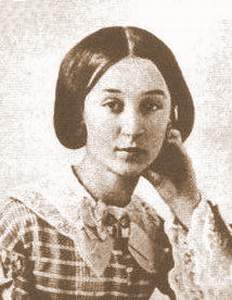
Ellen Richmond Ramseur (wife of Major General Stephen D. Ramseur) she lived until 1900







